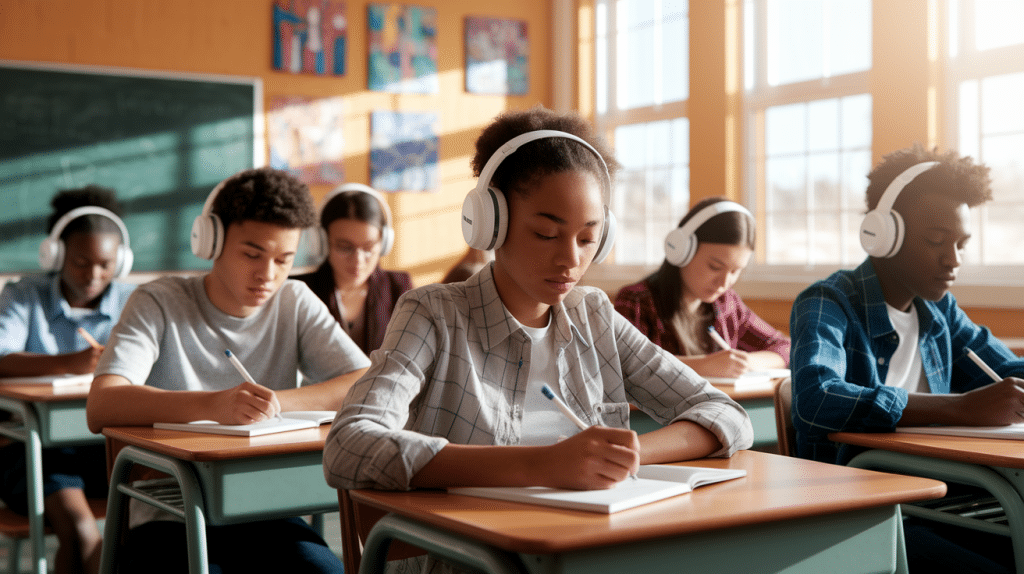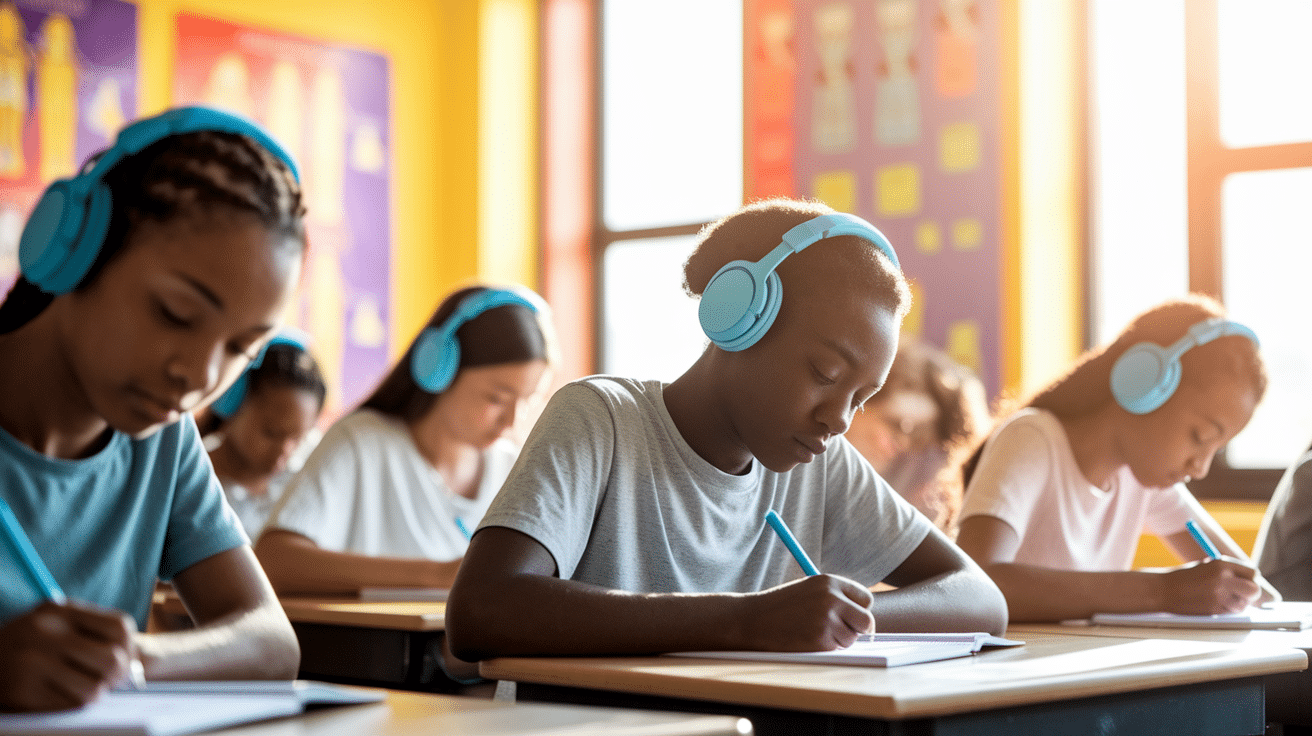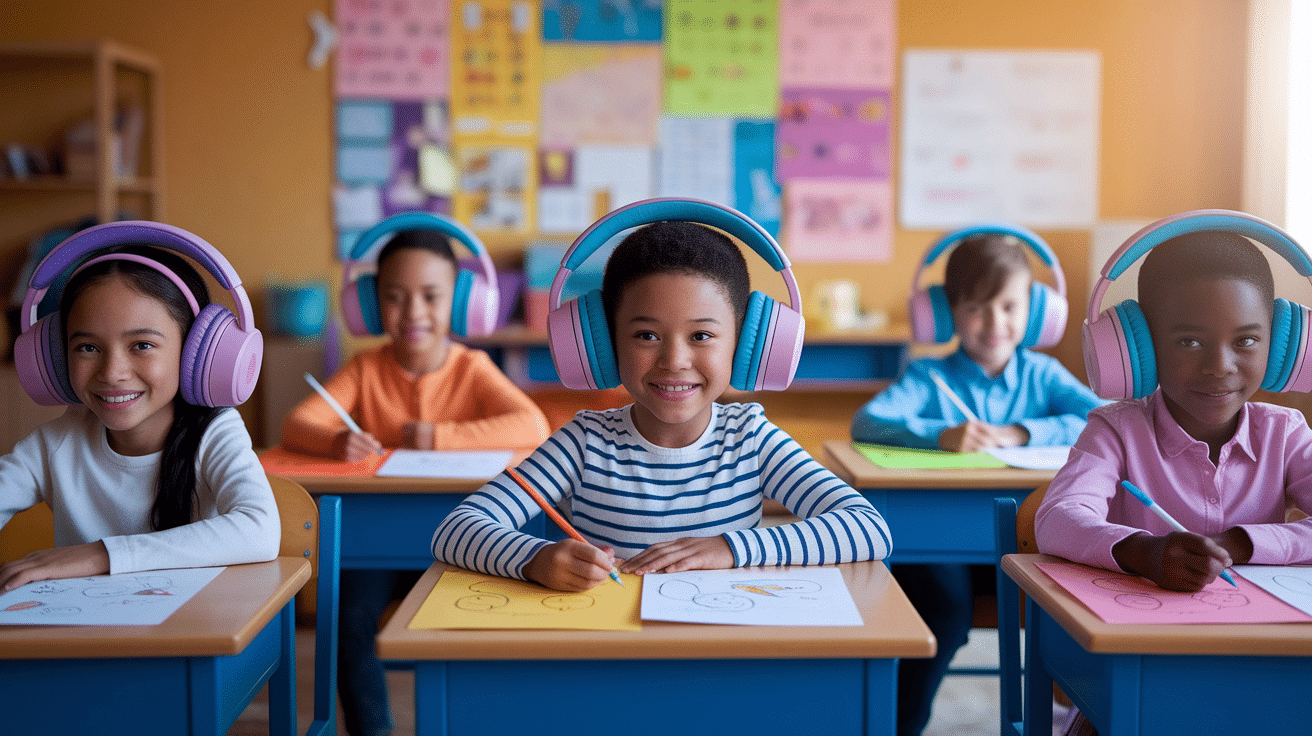Your teenager sits down to study and immediately plugs in their earbuds. Sound familiar?
Music has become part of the homework routine for most students today. They claim it helps them focus, but you’re not so sure.
Teachers are divided too. Some allow it during work time, while others ban headphones completely from their classrooms.
The truth is, there’s real science behind both sides of this argument.
Let’s jump into what works and what doesn’t when it comes to students and their study soundtracks.
Benefits of Listening to Music in Class
Music positively affects students’ mood management. A University of Miami study shows it reduces stress and anxiety, helping students stay calm and focused.
For students with attention challenges, such as ADHD (Attention Deficit Hyperactivity Disorder) or ADD (Attention Deficit Disorder), music can be a helpful tool.
Research from the University of North Texas found that music can improve focus, making it easier for these students to stay on task.
In addition to improving mood, music can also act as a motivator. Classical or instrumental music, in particular, has been shown to help students concentrate better.
A study by the University of Helsinki found that students who listened to instrumental music while studying showed better focus and memory.
Drawbacks of Listening to Music in Class
While music has benefits, it also has some drawbacks. A study by the University of Wales found that music with lyrics can hurt reading comprehension and productivity.
Research from Stanford University shows that multitasking, like listening to music while learning, divides attention and lowers performance. The brain struggles to do two things at once.
Music can also be distracting. Some students may focus more on the music than the lesson, and certain song lyrics may negatively impact behavior in class.
How Music Affects Different Learning Styles
Not all students learn the same way, so it makes sense that music would affect each type of learner differently.
Here’s what the research tells us about matching music to learning styles.
| Learning Style | Response to Music | Best Music Options |
|---|---|---|
| Auditory Learners | Often beneficial; can help with focus and information retention | Instrumental tracks, classical compositions, and low-volume background music |
| Visual Learners | May be distracting; can pull attention from visual cues | Soft, consistent instrumental music without variations |
| Reading/Writing Learners | Mostly distracting; competes with internal voice | Very soft, no-lyrics background sounds or white noise |
| Logical/Mathematical Learners | Often disrupts analytical thinking | Structured, pattern-based music like Bach |
Note: Based on research from the University of California study on individual differences in learning styles.
When to Avoid Music
Some tasks require full attention, and music may interfere rather than support learning.
-
Auditory Learners: Avoid music during verbal instruction, videos, or discussions, as competing sounds hinder learners from absorbing spoken info and following conversations.
-
Visual Learners: Don’t use music during visual tasks like reading, analyzing maps or charts, or solving puzzles. It can divide attention and interfere with how they process visual cues.
-
Reading/Writing Learners: Avoid playing music during focused reading, essay writing, or text analysis. These learners depend on an internal verbal flow, and music can disrupt their ability to think in words.
-
Logical/Mathematical Learners: Skip music during tasks involving detailed calculations, formulas, or step-by-step reasoning. Even structured music may interrupt their concentration when precision and logic are required.
Recommendations and Best Practices
To maximize the impact of music in the classroom, it’s essential to establish clear guidelines and understand how it affects the learning and focus of different students.
Allow music during independent or non-instructional time: This ensures that music helps students focus on tasks without disrupting direct instruction.
Encourage instrumental or classical music: Studies, like the one from the University of Helsinki, show that instrumental music is less distracting and can improve student focus.
Set clear guidelines for volume and music types: Ensure the music isn’t too loud and doesn’t interfere with communication or classroom activities.
Promote self-regulation among students: Encourage students to recognize when music helps or diverts their focus, leading to better outcomes in the classroom.
Conclusion
Allowing music in the classroom comes with both advantages and challenges.
While it can improve mood, focus, and productivity for some students, it can also cause distractions and hinder comprehension for others.
By thoughtfully integrating music into non-instructional times and promoting instrumental music, schools can harness their potential benefits while minimizing the risks.
It’s important for schools to consider flexible policies that accommodate diverse student needs while prioritizing effective learning outcomes.






















